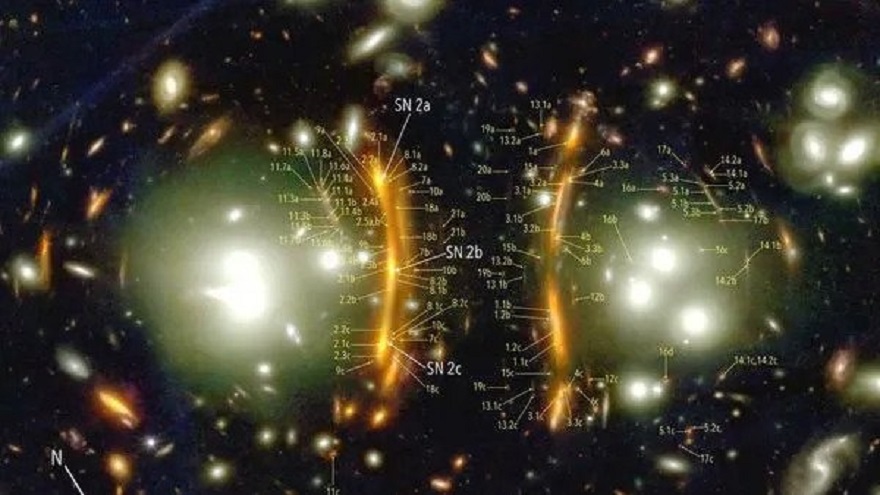The Hubble Space Telescope captured a supernova, which gravitational lensing showed three times and turned into a light arc. Scientists hope that its lig ht will help them solve one of the biggest mysteries about our Universe.

Distorted supernova and Hubble Telescope
In March of this year, the Hubble Space Telescope received an image of the supernova SN H0pe. It is able to see these most powerful explosions in the universe at distances far exceeding the size of our Galaxy. This one was taken by the orbital observatory from a distance of billions of light years.
The most interesting thing about the image is that the supernova on it looks like a light arc that envelops the galaxy cluster PLCK G165.7+67.0 (G165), similar to three bright spots. This cluster is located 4.5 billion light-years away from us. Three dots can be seen inside the arc, which are actually images of the same object.
The reason that the supernova looks so strange is the effect of gravitational lensing. The force of attraction of the objects that are between us and SN H0pe duplicated the image of the star twice, forcing the light to move in different ways. And the rest of the radiation is generally “smeared” in space.
New research
On September 20, a new article dedicated to SN H0pe was published. The authors draw attention to the fact that this supernova belongs to type Ia. They occur in close systems consisting of an ordinary star and a white dwarf. A substance from a companion falls on the latter all the time, which at some point leads to an explosion.
At the same time, the force of the explosion and how it fades in all cases are the same. Because of this, type Ia supernovae are considered by scientists as “standard candles”. It is good to determine the distance by their apparent brightness. And in the case of SN H0pe, the gravitational lens also made it clearly visible.
How fast is our Universe expanding
Therefore, scientists suggest using it to solve one of the biggest mysteries of our time — the “Hubble tension”. It gets its name not from a space telescope but from a constant, which, in turn, bears the name of the same American scientist as the observatory.
The Hubble constant is a fundamental value that determines how fast our Universe is expanding. Its value is determined experimentally. And the problem is that its values obtained from observing galaxies and from the relic microwave background are slightly different. As a result, even how long ago the Big Bang occurred is determined with an error.
Scientists hope that by determining the apparent brightness of SN H0pe, they will know the exact distance to it. And by examining its spectrum, they can find out how fast it is moving away from us. Based on these data, it is possible to determine the Hubble constant and put an end to all disputes.
According to www.space.com
Follow us on Twitter to get the most interesting space news in time
https://twitter.com/ust_magazine
